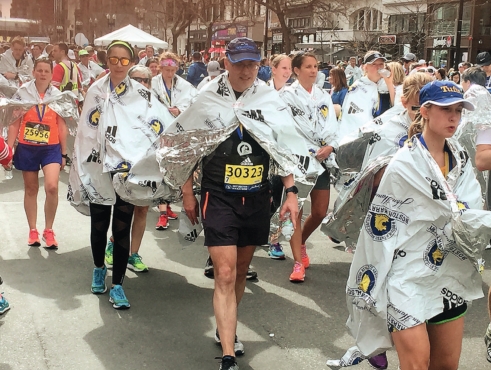
30,000 runners and 500,000 spectators may be under a more watchful eye by local and federal law enforcement at this year’s Boston Marathon.
According to a report from ABC News, law enforcement officials will be monitoring various potential targets during this year’s race, especially in those areas with the largest number of people.
Law enforcement agencies cited a number of social media posts calling for violence, as well as the marathon coinciding with several religious holidays and the dates of previous attacks as cause for their concern, according to the report.
“The
safety of everyone involved in the Boston Marathon is always our
priority” Lauren Proshan, Chief of race operations and production at the
Boston Athletics Association (BAA) said in an email. “We continue to
plan for a safe and secure marathon weekend, though the BAA does not
speak to specifics of the security plan”
“We want to again thank the police and law enforcement personnel who work year round with us and in our planning.”
Proshan added that all spectator guidelines can be found on the BAA website or on the BAA Racing App.
William
Evans, executive director of public safety and chief of police at
Boston College and former Boston Police commissioner, said that any
event that gathers a great number of people runs some risk of becoming a
target and pointed to the New Year’s Eve attack in New Orleans as an
example.
“Bag checks,
getting the public to, if they see something out of the ordinary, to let
us know. But, as you know, there’s been unfortunate terrorist attacks
around the world. I think we’ve seen it in New Orleans on New Year’s
Eve,” he said. “I think with so much unrest in the world right now, most
police agencies around the country have, if you’re going to do special
events, really have to make sure they can do their best to secure it.”
The
key, Evans said, is that law enforcement and everyone involved want a
safe and secure race route this year. They don’t want people to jump the
barriers or cross the route. He urged spectators to cooperate with race
officials and the police to ensure the marathon is as safe as possible.
Specifically, he added, officials appreciate it when the public keeps things like bags and coolers at home.
“There’s
a lot of unrest in the world unfortunately, and people feel unsettled,”
said Evans. “I think with that, law enforcement has to up their game in
securing any event and also asking the public’s help for it.”
In
an April 4 letter to area college and university students, Boston
Police Commissioner Michael Cox wrote that the department has planned
security measures for marathon events throughout the weekend. Cox added
that spectators should expect a significant presence of uniformed and
plain clothes officers from many agencies along the 26.2-mile course.
Cox
also provided several tips for spectators ahead of the race, urging the
public to refrain from public drinking and carrying open containers, be
careful of drinks, as they’ve seen incidents of drink spiking and to be
aware of cellphone thefts, among others.
Both
Cox in his letter and Evans recommended that people take public
transportation and take notice of race related road closures throughout
the day.
“Again, a
marathon is very difficult to secure,” Evans said. “It’s 26.2 miles. We
need the public’s help to help us secure and make it a great event,
which it always is.